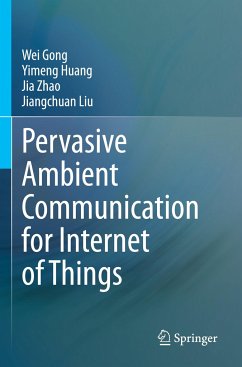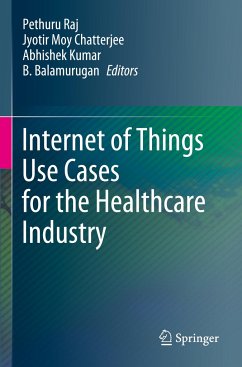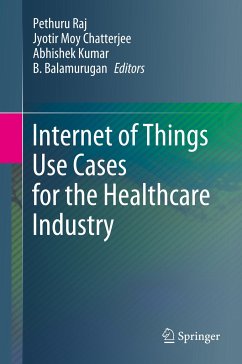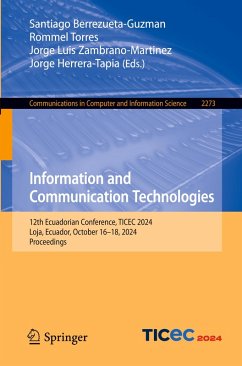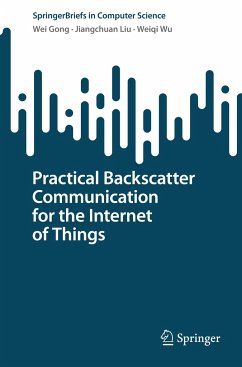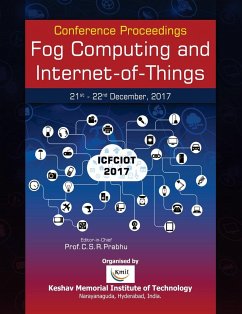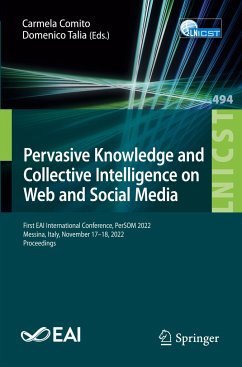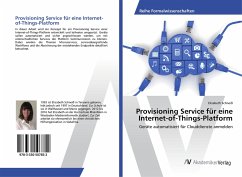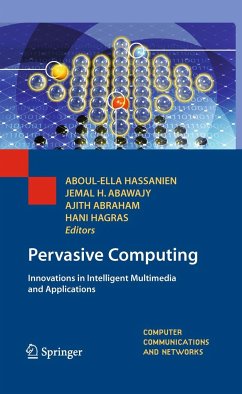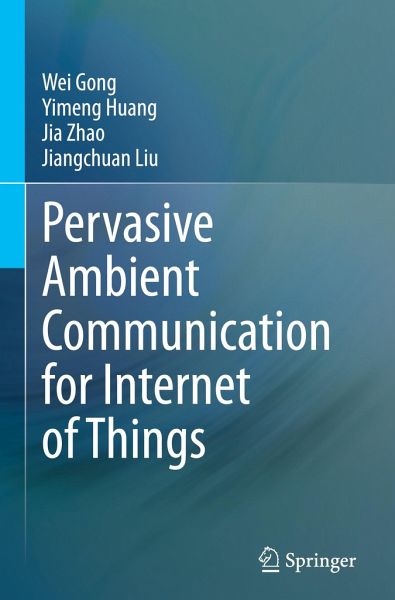
Pervasive Ambient Communication for Internet of Things
Versandkostenfrei!
Versandfertig in 6-10 Tagen
121,99 €
inkl. MwSt.
Weitere Ausgaben:

PAYBACK Punkte
61 °P sammeln!
This book covers several essential aspects of pervasive ambient backscatter communication, one of the most cutting-edge technologies for Internet-of-Things. It begins with introductory Part I, which presents visions, basic concepts, principles, and paradigms of ambient backscatter. Also, a taxonomy of state-of-the-art ambient backscatter systems is provided from the perspective of the OSI model. Part II and III study how ambient backscatter systems work on the communication and networking levels. Specifically, Part II discusses in detail how to make use of ambient WiFi signals to provide high-...
This book covers several essential aspects of pervasive ambient backscatter communication, one of the most cutting-edge technologies for Internet-of-Things. It begins with introductory Part I, which presents visions, basic concepts, principles, and paradigms of ambient backscatter. Also, a taxonomy of state-of-the-art ambient backscatter systems is provided from the perspective of the OSI model. Part II and III study how ambient backscatter systems work on the communication and networking levels. Specifically, Part II discusses in detail how to make use of ambient WiFi signals to provide high-throughput backscatter communications with WiFi 1 (chapter 5), WiFi 2-3 (chapter 4), WiFi 4 (chapter 3), WiFi 5-6 (chapter 6) standards. Further, Part III includes several of the most advanced ambient backscatter network solutions, which are made possible by the first multi-hop backscatter (chapter 7), first backscatter mesh (chapter 8), and multiprotocol backscatter (chapter 9). On top of reliable communication and networks, we propose two novel applications that are thought impossible before, lightweight spatial sound recording over the air (chapter 10) and self-powered wireless wearables for healthcare (chapter 11). To conclude the monograph, we point out critical challenges for realizing the vision of pervasive backscatter IoTs and potential directions of ambient backscatter applications.
The book provides an in-depth understanding of ambient backscatter technologies. In particular, we mainly take ubiquitous WiF signals as the communication sources and adopt a top-down approach to introduce three crucial subjects: WiFi backscatter communication, ambient backscatter network, and self-powered application systems. For each subject, we carefully divide it into several relatively independent topics, which come with the latest advances in pervasive backscatter and include extensive discussions of closely related state-of-the-art methodologies.
The book provides an in-depth understanding of ambient backscatter technologies. In particular, we mainly take ubiquitous WiF signals as the communication sources and adopt a top-down approach to introduce three crucial subjects: WiFi backscatter communication, ambient backscatter network, and self-powered application systems. For each subject, we carefully divide it into several relatively independent topics, which come with the latest advances in pervasive backscatter and include extensive discussions of closely related state-of-the-art methodologies.





